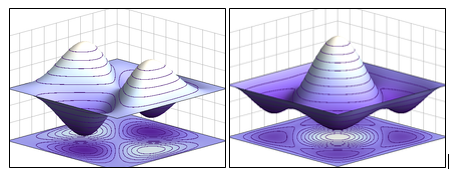Pauli exclusion principle
Claimed by Michael Segal
Edited by Ansley Marks
The Pauli exclusion principle is a quantum mechanical principle that asserts that no two electrons in the same atom can occupy the same quantum states simultaneously.
The Main Idea
For each electron in a molecule, there are four distinct values that describe the state of the electron.
One of the main points of the Pauli Exclusion Principle is that no two electrons share the same four values. When electrons fill degenerate energy levels, they must satisfy the Pauli Exclusion Principle and Hund's Rule by not sharing the same orbital and by having parallel spins. This also ends up taking the least amount of energy to fulfill because the electrons interact with one another the least possible amount.

Electrons "space out" while filling the orbitals because electrons act like tiny magnets and repel each other. This means the lower energy level would be to have the electrons spaced further apart. The spins of the electrons are all parallel because the electrons will interact less often if they are all traveling in the same direction, thus lowering the repulsive forces and energy. These two values of electron's direction and position are denoted by s (spin quantum number) and m (magnetic quantum number) respectively.
Properties
The Pauli exclusion principle asserts that all particles are either fermions or bosons. Fermions have an odd multiple of half spins. Bosons have an even multiple of half spins, thus result in an integer amount of spin. For example, helium-3 is a fermion with the spin of 1/2 and helium-4 is a boson with the spin of 0. Bosons are not constrained by the Pauli Exclusion Principle like fermions.
The spins have an intrinsic effect on the angular momentum values of a particle. Particles with a half-integer spin (fermions) have antisymmetric states, while particles with a integer spin (bosons) have a symmetric, wavelike functions.
(Left: Fermion; Right: Boson)
The Pauli Exclusion Principle can be used to derive a probability equation for wave functions. The general form for the probability wave equation for fermions is derived as such:
Ѱf= Ѱ1(a) * Ѱ2(b) - Ѱ1(b) * Ѱ2(a)
Where 'a' and 'b' are the states of electron 1 and electron 2 respectively. The psi greek character represents the 'probability amplitude' that the electron is in its certain state. The equation is equal to the final probability that both states are occupied by electron 1 and 2. This equation proves that it is impossible for both electrons to occupy the same state. If this were the case, then Ѱf would equal 0, meaning the probability is 0.
History
The Pauli exclusion principle is named after Austrian physicist Wolfgang Pauli. Pauli proposed the assertion in 1925 and received a Nobel Prize in 1945 for his discovery. He is considered a founding father of quantum mechanics and discovered many of his theories and principles without a formal existing definition of what we today call "spin".
Pauli's discovery and implementation of a fourth quantum number laid the groundwork and inspiration for quantum mechanics in the next years following its announcement. Much of Heisenberg's and Shrodinger's discoveries on wave mechanics were built off of the Pauli exclusion principle.
Importance
The significance of the Pauli exclusion Principle is that it introduced a fourth quantum number. While spin is not a physical characteristic, it is crucial when determining shapes and wavelike behaviors of atomic particles. The principle dictates that bosons have probability waves which "flip" as they move and interfere with eachother. The interference of these probability waves leads to collective behavior that can result in lasers, superfluids and superconductors. Conversely, fermions do not flip their probability waves and do not interact with each other. Fermions include electrons, protons and neutrons.
See Also
There are plenty of great YouTube videos that can explain the Pauli Exclusion Principle. The Pauli Exclusion Principle is closely related to Hund's Rule and most videos introduce both topics in conjunction. Click on the following link to learn more about Pauli Exclusion Principle and Hund's Rule: https://www.youtube.com/watch?v=9WA8BeE3jRw
Another closely related topic is Heisenberg's Uncertainty Principle which basically states that the momentum and position of a particle cannot be found at the same time. Hyper Physics is a great forum for physics topics and has a short page dedicated to Heisenberg's Principle: http://hyperphysics.phy-astr.gsu.edu/hbase/uncer.html
Sources
Hyper Physics: http://hyperphysics.phy-astr.gsu.edu/hbase/pauli.html
Wikipedia: https://en.wikipedia.org/wiki/Quantum_number
Physics of the Universe: http://www.physicsoftheuniverse.com/topics_quantum_spin.html
APS: http://www.aps.org/publications/apsnews/200701/history.cfm
